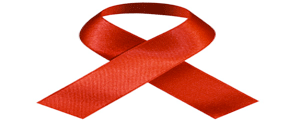
Elsewhere we carry a story urging the government to consider using more accurate viral load monitoring instead of the commonly used CD4 count in HIV patients so that those on medication are not erroneously moved to the more expensive second line treatment regime.
NewsDay Editorial
The cost of World Health Organisation (WHO)-recommended second-line treatment has fallen — thanks to development of generic drugs, by a substantial 75% since 2006, from $1 200 to $300 for today’s most affordable second-line combination.
Reasons are that routine evaluation of a person’s HIV viral load is important in identifying who needs help in adhering to HIV treatment.
Besides, viral load can help prevent viral transmission because people with “undetectable” viral load have a very low risk of transmitting HIV. It is thought that viral load is a much more accurate way than the commonly used CD4 count to determine how well someone is doing on treatment, potentially avoiding unnecessary switch to more expensive second or third-line treatment.
WHO now strongly recommends implementing routine viral load monitoring although current tests are expensive and complex for remote and resource-limited settings like our country.
What is encouraging though are disclosures by Médecins Sans Frontières (MSF), a local medical NGO, that the viral load monitoring system was more spot on in problem detection.
Zimbabwe has had an increasing number of people failing to get tested for HIV until the disease is well-advanced hence the call for government to switch to viral load which is more correct.
- Chamisa under fire over US$120K donation
- Mavhunga puts DeMbare into Chibuku quarterfinals
- Pension funds bet on Cabora Bassa oilfields
- Councils defy govt fire tender directive
Keep Reading
Of those suspected of treatment failure after standard HIV tests such as white cell counts and clinical signs, as many as 70% could be unnecessarily switched to more toxic treatments because these tests can falsely suggest their first-line treatment was failing.
A 2012 MSF survey of 23 resource-limited countries showed that only four used viral load monitoring in their treatment guidelines although all the countries had the guidelines in their programmes. The study looked at the first-ever viral load test among adults on antiretroviral therapy in Zimbabwe, Kenya and Malawi.
It is important to note that the goal of providing ART is to suppress HIV to undetectable levels for life.
Viral suppression reduces illness, death, the development of drug resistance, and the spread of new infections. When HIV is undetectable, it means the virus isn’t replicating, and people can live healthy, productive lives.
Once started HIV treatment must be taken for life and routine treatment monitoring is necessary to ensure that a person’s ART regimen continues to be effective. If treatment stops working, people become sick and the risk of drug resistance and transmission is increased. The first sign that a patient is no longer under optimal treatment is a detectable viral load – thus, the best and earliest signal that a clinical intervention is needed is the viral load measurement.











